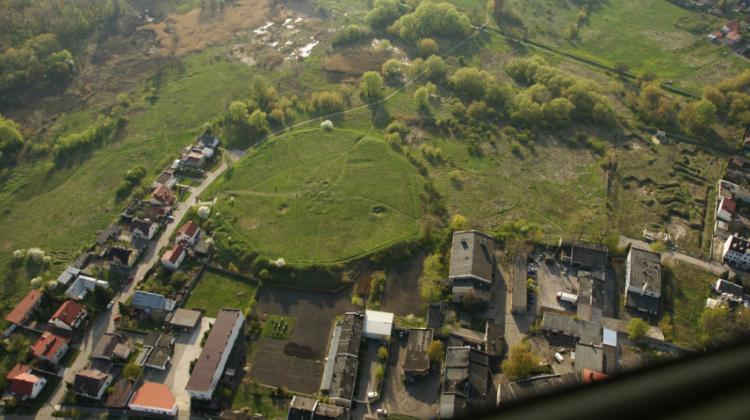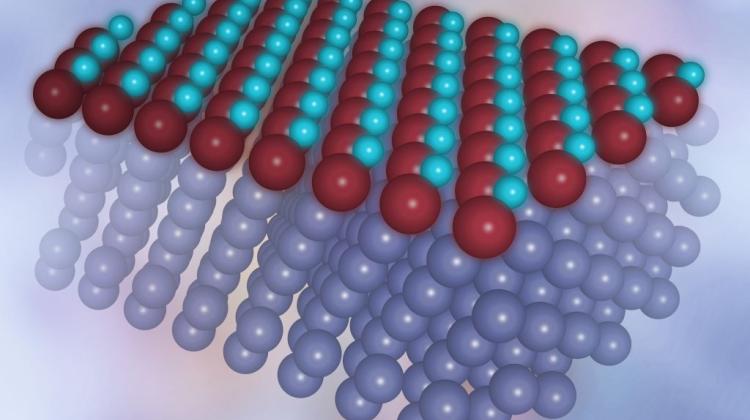Cultural Park: a remedy for the black legend of Radom
 Settlement in Radom, bird's eye view. Photo by D. Krasnodębski
Settlement in Radom, bird's eye view. Photo by D. Krasnodębski
Radom authorities and scientists from the Polish Academy of Sciences are creating the Radom Cultural Park in the Mleczna river valley. The project will include the reconstruction of early medieval settlement and re-naturalization of the Mleczna river. It will be the largest project of this type not only in Poland but also in Europe.
Radom Cultural Park project includes the re-naturalization of the river and surrounding enclaves of nature, reconstruction of the early medieval settlement, restoration of nineteenth-century industrial buildings and incorporation already existing objects such as the settlement in its natural state, fourteenth-century church of St. Wenceslas, the remains of thirteenth-century urban system called the Old Town of Radom.
"Because of the multifaceted approach, reconciling many elements and not being limited to one historical period, it will be the largest project of its type in Europe" - Dr. Maciej Trzeciecki of the Institute of Archaeology and Ethnology of the Polish Academy of Sciences said in an interview with PAP.
Running almost through the middle of Radom, the Mleczna river valley for years has been one of the most embarrassing places of the city. Overgrown with nettles, recycle, serving the locals as a place for illegal sand digging, garbage disposal and cheap alcohol drinking, it turned out to be an extremely interesting archaeological site.
"In 2006, developers tried to buy the land to build apartment buildings. It was then that the people of Radom remembered that under a layer of nettles and rubbish lies early medieval settlement, and the whole area of the valley is listed as a heritage site" - said Trzeciecki.
The first excavations in the Mleczna valley were carried out in the 1960s as part of the so-called Millennium studies. Grand scale studies were closed due to lack of funds, and their results have never been published. The only tangible result was the registration of the Mleczna valley as a monument. In connection with the new status of the valley, construction on the site required obtaining a large number of permits, so the area gradually became overgrown and turned into a wasteland.
Numerous protests of the people of Radom in 2006 led to stopping the buyout of land by developers and the decision to restructure these areas. One idea was to create an open-air museum similar to Biskupin. "Both in Poland and in the world there is a worrying trend of starting projects such as cultural park from the end, from open-air museum. Fortunately, in the case of Radom it was the other way around" - commented Trzeciecki.
The city authorities have turned to the Institute of Archaeology and Ethnology PAS, which conducted the study in the 1960s, with a proposal of cooperation and financing a five-year research project. The task of the scientists was to provide full knowledge about the appearance of the valley and settlement in the early Middle Ages, so that on this basis the park project could be prepared. Research conducted by scientists from the Polish Academy of Sciences lasted from 2009 to 2013.
"Paradoxically, what makes Radom so interesting is that it is typical" - said Trzeciecki. According to the scientist, the history of Radom is a great example of the development of Polish cities, from the local centre founded by the Piast Dynasty in the tenth century, through the King Casimir the Great reforms modelled on Western cities, changes in the sixteenth century, the golden period of industrialization in the nineteenth century and contemporary problems typical for cities of similar size.
During the excavations, archaeologists found, inter alia, a twelfth-century reliquary cross and previously unknown coins from the times of Wladyslaw the Elbow-high , which may indicate the existence of a mint in Radom. "It turns out that the city is extremely interesting from a historical point of view, the majority of residents do not realize that. Few people know that in the sixteenth century Radom was the seat of Polish kings, it is here that the Nihil Novi Constitution was adopted, and in the nineteenth century Radom was one of the most important industrial centres throughout the Congress Kingdom. Cultural Park will allow the people of Radom to discover the history of their city" - reminded the scientist.
Today the Mleczna river valley is basically invisible. The river flows in a canal and it is polluted. The valley itself is destroyed by illegal sand digging and garbage dumping. The current work is aimed at restoring the valley’s original appearance. "Cultural Park project is very complex. One of its objectives is the re-naturalization of the Mleczna river and surrounding areas, so that they look like it could have been 600 years ago" - said Trzeciecki.
In the past, the Mleczna was a wide, navigable river, and its depth reached 2 meters. It was overgrown with forest and marsh vegetation with a predominance of deciduous trees, for example alders. Everywhere were wetlands, which is why the castle town was located at the bottom of the valley. It was surrounded by a dozen clusters of a huts that housed people that worked in the castle. "The Middle Ages was a completely different scale. The castle town consisted of several buildings inhabited by a few people, "- says Trzeciecki. The surrounding areas were covered with forests, where the locals hunted bear and aurochs. The town maintained commercial relations with the East, and from time to time was visited by the rulers. The people were growing cabbage, turnips and other vegetables. The researchers also found fruit and seeds of bog blueberry, which is used in folk medicine.
Re-naturalized river and the reconstruction of one of the settlements adjacent to caste town will become the starting point for different scenarios for exploring the city and discovering its subsequent history.
"Ultimately, the entire area stretching from Radom Village Heritage Park, which is located south of the city, to the Witold Gombrowicz Museum in Wsola will become a sort of giant natural recreation area. These are huge areas, and the project will be implemented for decades. But if it succeeds, Radom will become a very interesting place and can finally overcome its black legend - said Trzeciecki. - We were worried that the change of political option in the local government will result in the suspension of the project. Fortunately, it turned out that it is a cross-party project".
Reconstruction of the settlement will be located near the original castle, and form part of the landscape of the valley. According to the researchers, the reconstruction is essential. "It is much easier to impart knowledge of the history, when the lesson participants can walk between houses that look like those a thousand years ago, see how people lived in those times, how they dressed and how they made objects of everyday use. We can offer participants an adventure that has educational value" - explained Trzeciecki.
The reconstructed settlement will consist of several households, in which visitors will discover the way of life in the Middle Ages, from outfits and methods for making everyday objects to general beliefs and ideas. Construction work will be carried out by members of reconstruction groups. "We are committed to maximum reliability. These are people with incredible passion and enthusiasm, with which they infect others. This ensures that all structures be made using the techniques and tools used a thousand years ago, and we know that the reconstruction will live its own life for years" - said Trzeciecki.
PAP - Science and Scholarship in Poland, Alicja Karasińska
akr/ agt/ mrt/
tr. RL
Przed dodaniem komentarza prosimy o zapoznanie z Regulaminem forum serwisu Nauka w Polsce.


















